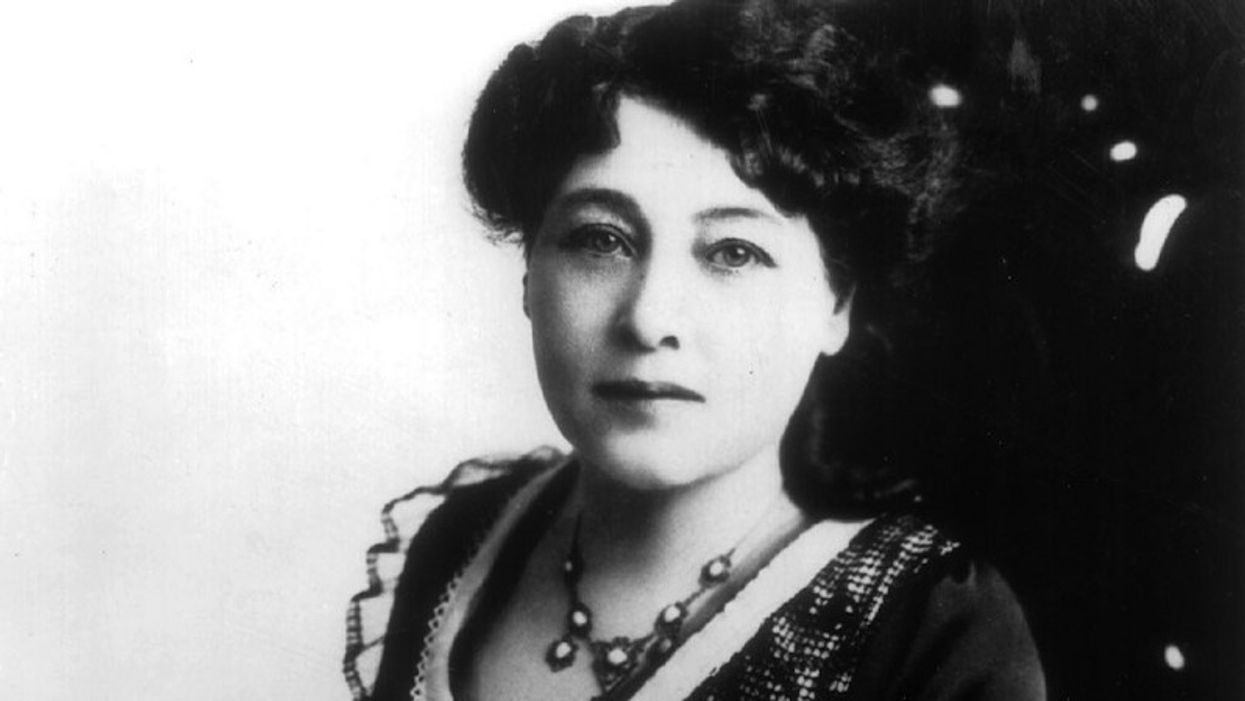Alice Guy-Blaché, the World's First Female Filmmaker, Wrote, Directed, and Produced Over 700 Films
A pioneer filmmaker, Alice Guy-Blaché started making films at the birth of cinema and built the largest pre-Hollywood studio.

From 1896 to 1906, Alice Guy-Blachè was "probably the only woman filmmaker in the world," and, in a decades-long career that saw both the birth of motion pictures and the ascendance of cinema as a global powerhouse, she wrote, directed, produced, or, supervised the production of between 750 and 1,000 films (silent and talkie). 22 were feature length, but only 350 of her films survive.
Alice Guy was born in France in 1873, and began her career as secretary to one of cinema's technological pioneers, Léon Gaumont, a French inventor and early film distributor, whose Chromophone was one of the first widely-used sync sound systems (during motion picture sound's "wild west" period). She attended meetings with pioneers such as the Lumière Bros. (who exhibited some of the first ever motion pictures in 1895, an event at which she and Gaumont were present) and was a quick study. At the time, films such as those of the Lumières were defiantly non-narrative, instead documenting everyday events—the aforementioned screening featured a short consisting of a single shot of workers leaving the Brothers' factory at the end of the day, as well as one of a train arriving.
"My youth, my lack of experience, my sex all conspired against me."
Guy realized film's potential as a storytelling medium, and, according to her autobiography, approached her employer: "I thought I could do better…Gathering up my courage, I timidly proposed to Gaumont that I would write one or two short plays and make them for the amusement of my friends. If the developments which evolved from this proposal [the global success of the motion picture business] could have been foreseen, then I probably never would have obtained his agreement. My youth, my lack of experience, my sex all conspired against me."
Her first film, 1896's La Fée aux Choux (The Cabbage Fairy), is a fantastical, humorous short about a woman growing up in a cabbage patch; along with some of Georges Méliès' shorts of the same year, it vies for the title of first narrative film in history. Guy was 23.
Filmed at a small house supplied by Gaumont with a minimal cast that included her friends, Guy later recounted the production: "In this place, I made my debut as a director. A sheet painted by a neighbourhood painter who specialised primarily in scarecrows and the like; a vague set—rows of cabbages constructed by a carpenter; costumes rented around the Porte St Martin. The cast: my friends, a crying baby, a worried mother. My first film thus saw the light."
"My first film thus saw the light."
As the world's only female director for the next decade, Guy's films shared many elements with those of Méliès and the Lumière Bros.—the Fandor video notes that many of her films contained extensive experimentation with early visual effects techniques like double exposure and hand-tinting, and, like the latter, many were also travelogues and scenes from everyday life. She also consistently made ground in her quest to develop an aesthetic of narrative filmmaking at a time when filmmaking was still deciding what it was going to be. In 1906, Guy released her most ambitious production to date, La Vie du Christ, a thirty-minute extravaganza "that featured twenty-five sets as well as numerous exterior locations and over three hundred extras."
The following year, Guy married the British-born director Herbert Blaché (who worked for Gaumont, too), and moved to the U.S. In 1910, the two founded Solax, the largest pre-Hollywood studio, first in Flushing, Queens, and two years later in Fort Lee, New Jersey, the "original" Hollywood, where the rest of the early motion picture business was located (a few years later, Thomas Edison's monopoly would drive the industry west.)
From 1910 to 1914, Guy-Blaché oversaw the production of 325 films, editing all scripts and directing 35-50 of them herself (including A Fool and his Money, the first ever film to feature an all African-American cast), all while raising two children and building "a $100,000 state-of-the-art studio replete with carpentry shops, prop rooms, dressing rooms, five stage sets, labs, dark rooms, and projection rooms. The studio’s grounds were sculpted to accommodate an abundance of landscapes, which [she] patrolled on horseback."

The couple divorced in 1922, with Herbert remaining in Hollywood and Alice returning to France, where she lectured on film and wrote fiction, though never directed another film. Decades later, she returned to the U.S. to live with her daughter, and died at the age of 94, in 1968. She is buried in New Jersey, near the site of her greatest cinematic successes.
Though many of her films have not survived, having been shot on obsolete formats, or lost to highly flammable nitrate stock, Guy-Blaché's memoir was among the means she used to retrospectively claim rightful credit for her place in the film industry as a pioneer. Recognition has come to her slowly, trickling outwards from the academic community.
A few years ago, our own V. Reneé conducted an interview with the filmmakers behind Be Natural (the slogan Guy-Blaché kept on prominent display at Solax), a documentary on her life and career that's still in post, and which you can donate to by clicking here. As more and more people learn about Alice Guy-Blachè and her contributions to early cinema, she will no doubt take her rightful place in history for the tremendously important role she played in the birth of the movies.
Source: Open Culture













